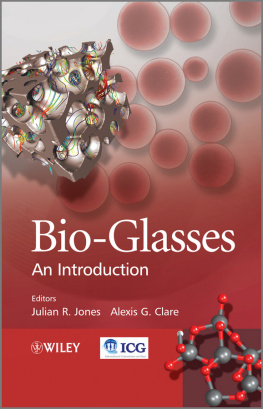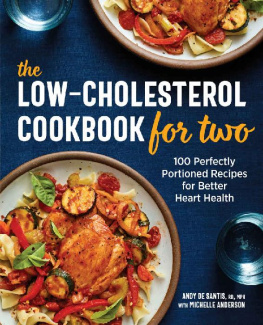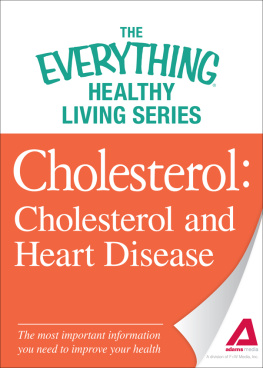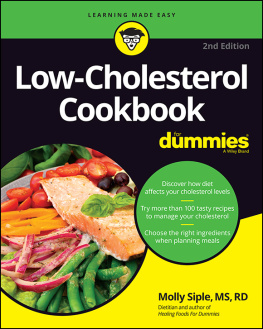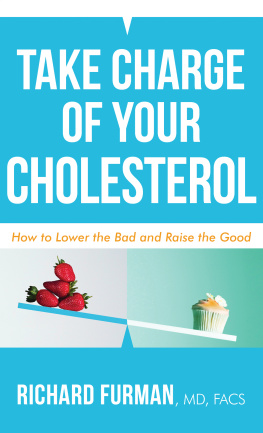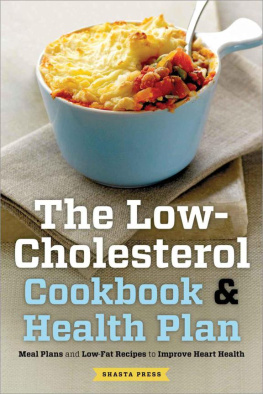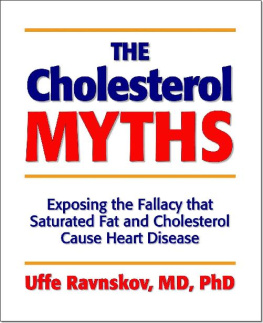This edition first published 2012
2012 John Wiley and Sons, Ltd.
Registered office
John Wiley & Sons, Ltd., The Atrium, Southern Gate, Chichester, West Sussex, PO19 8SQ, United Kingdom
For details of our global editorial offices, for customer services and for information about how to apply for permission to reuse the copyright material in this book please see our website at www.wiley.com.
The right of the author to be identified as the author of this work has been asserted in accordance with the Copyright, Designs and Patents Act 1988.
All rights reserved. No part of this publication may be reproduced, stored in a retrieval system, or transmitted, in any form or by any means, electronic, mechanical, photocopying, recording or otherwise, except as permitted by the UK Copyright, Designs and Patents Act 1988, without the prior permission of the publisher.
Wiley also publishes its books in a variety of electronic formats. Some content that appears in print may not be available in electronic books.
Designations used by companies to distinguish their products are often claimed as trademarks. All brand names and product names used in this book are trade names, service marks, trademarks or registered trademarks of their respective owners. The publisher is not associated with any product or vendor mentioned in this book. This publication is designed to provide accurate and authoritative information in regard to the subject matter covered. It is sold on the understanding that the publisher is not engaged in rendering professional services. If professional advice or other expert assistance is required, the services of a competent professional should be sought.
The publisher and the author make no representations or warranties with respect to the accuracy or completeness of the contents of this work and specifically disclaim all warranties, including without limitation any implied warranties of fitness for a particular purpose. This work is sold with the understanding that the publisher is not engaged in rendering professional services. The advice and strategies contained herein may not be suitable for every situation. In view of ongoing research, equipment modifications, changes in governmental regulations, and the constant flow of information relating to the use of experimental reagents, equipment, and devices, the reader is urged to review and evaluate the information provided in the package insert or instructions for each chemical, piece of equipment, reagent, or device for, among other things, any changes in the instructions or indication of usage and for added warnings and precautions. The fact that an organization or web site is referred to in this work as a citation and/or a potential source of further information does not mean that the author or the publisher endorses the information the organization or web site may provide or recommendations it may make. Further, readers should be aware that Internet web sites listed in this work may have changed or disappeared between when this work was written and when it is read. No warranty may be created or extended by any promotional statements for this work. Neither the publisher nor the author shall be liable for any damages arising herefrom.
Library of Congress Cataloging-in-Publication Data
Bio-glasses : an introduction / [edited by] Julian Jones and Alexis G. Clare.
p. ; cm.
Includes bibliographical references and index.
ISBN 978-0-470-71161-3 (cloth)
I. Jones, Julian R. II. Clare, Alexis.
[DNLM: 1. Biocompatible Materials. 2. Glass. 3. Drug Delivery Systems. 4. Regeneration. 5. Tissue Scaffolds. QT 37]
610.28dc23
2012008850
A catalogue record for this book is available from the British Library.
List of Contributors
Aldo R. Boccaccini
Department of Materials Science and Engineering, University of Erlangen-Nuremberg, Erlangen, Germany
Delia S. Brauer
Otto Schott Institute, Friedrich Schiller University Jena, Jena, Germany
Qi-Zhi Chen
Department of Materials Engineering, Monash University, Clayton, Victoria, Australia
Alexis G. Clare
Kazuo Inamori School of Engineering, New York State College of Ceramics, Alfred University, Alfred, USA
Alastair N. Cormack
Kazuo Inamori School of Engineering, New York State College of Ceramics, Alfred University, Alfred, USA
Delbert E. Day
Center for Bone and Tissue Repair, Graduate Center for Materials Research, Materials Science and Engineering Department, Missouri University of Science and Technology, Rolla, Missouri, USA
Satoshi Hayakawa
Department of Bioscience and Biotechnology, Okayama University, Tsushima, Okayama, Japan
Wolfram Hland
Ivoclar Vivadent AG, Schaan, Principality of Liechtenstein
Leena Hupa
Process Chemistry Centre, bo Akademi University, Biskopsgatan, bo, Finland
Julian R. Jones
Department of Materials, Imperial College London, South Kensington Campus, London, UK
Steven B. Jung
MO-SCI Corporation, HyPoint North, Rolla, Missouri, USA
Matthew D. O'Donnell
Department of Materials, Imperial College London, South Kensington
Campus, London, UK
Akiyoshi Osaka
Department of Bioscience and Biotechnology, Okayama University, Tsushima, Okayama, Japan
Yuki Shirosaki
Department of Bioscience and Biotechnology, Okayama University, Tsushima, Okayama, Japan
Kanji Tsuru
Department of Biomaterials, Kyushu University, Maidashi, Higashi, Fukuoka, Japan
Enrica Vern
Department of Applied Science and Technology, Politecnico di Torino, Torino, Italy
Antti Yli-Urpo
Institute of Dentistry, Faculty of Medicine, University of Turku, Turku, Finland
Foreword
Hamburger. Hot Dog. Ice Cream. Five ordinary words, but each had extraordinary significance. It was 1984 when Dr. Gerry Merwin, MD, an Ear, Nose and Throat surgeon at the University of Florida, Gainesville, Florida, whispered the words into the ear of a patient. She was an extraordinary patienta young mother, expectant with her second child. She was desperate to be able to hear her new-born baby cry. However, the mother was deaf from an infection that had dissolved two of the three bones of her middle ear. Only part of the stapes (stirrup) remained. Under a local anaesthetic, Dr. Merwin had just implanted the world's first Bioglass device into her middle ear. The implant was designed to conduct sound waves from her eardrum to her inner ear, the cochlea, and thus restore her hearing.
Bioglass was the first man-made material to bond to living tissues. I discovered it in 1969, but the material had to pass 15 years of in vitro (cells growing on it in the laboratory) and in vivo (animal) tests before the first device could be implanted. The University of Florida Shands Hospital Ethics Committee had approved the first human trial after evaluating data from safety tests done on hundreds of mice by Dr. Merwin, his surgical residents and Dr. June Wilson, who interpreted the histology data.
But, the big questions remained: Would this new material work in a human? Would the implant bond to the soft connective tissue of the eardrum? Would it bond to the hard connective tissue (bone) of the stapes? Would it conduct sound? Would normal hearing be restored?
No one knew the answers to these questions. Ear surgeons had inserted other types of middle ear implants in patients for many years, but they often failed. The materials used were metals and plastics, selected because they were as inert and non-toxic as possible in the body. A thin layer of scar tissue formed around the metal and plastic parts, isolating them from the body, eventually causing the implant to be forced out of position. All of the first-generation biomedical materials used in the body (so-called bio-inert materials) led to the formation of scar tissue. For some clinical needs, the scar tissue poses no problem. For a middle ear implant, scar tissue can be disastrous. Continual vibration and motion of the implant can wear a hole in the eardrum. The implant can come out through the hole, permanently damaging the eardrum.

